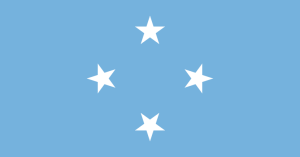What climate changes are occurring in the Federated States of Micronesia, and what’s next?
- Accelerating sea-level rise: Sea level has risen by a massive 10mm per year since 1993, 3 times the global average rise. Continued and accelerating sea level rise represents a dire threat to the entire nation, due to coastal inundation, flooding, erosion and storm surges (UNFCCC 1997). This higher than average fluctuation may be caused in part by phenomena such as the El Nino Southern Oscillation
- More intense El Ninos and La Ninas: There is the potential that climate change may bring more intense El Nino and La Nina events. La Nina represents a threat due to increased likelihood for flooding and perhaps some storms, while more intense El Ninos could bring worse drought conditions. Such intense variation would present island agriculture with challenging conditions.
- More very hot days: Under a high emissions scenario, temperatures in the Eastern States are likely to rise between 0.4-1.0°C, and in the West by 0.4-1.1°C by 2030.
- Less Frequent Typhoons: It’s actually predicted that in the region the Federated States of Micronesia is located, the frequency of both Typhoons and intense storms are likely to decrease. Those that do hit however are likely to be more powerful than today’s storms.
——————————————————————
More detailed information from the Australian Government’s ‘Pacific Climate Change Science Program’ can be downloaded here –> Fed States of Micronesia Climate Change Factsheet PDF.
What is the Government’s official position on climate change?
At the General statement of Assembly at the United Nations in 2013, Federated States of Micronesia President Emanuel Mori stated that while societies strived for economic progress, he said that the natural environment had come under attack, with climate change the gravest threat to his peoples’ welfare, adding that “it [climate change] is the survival issue of our time”. Read more about President Mori’s speech by clicking this link.
——————————————————————
We’re currently in contact with a number of our team coordinators, representatives and volunteers on the ground in the Pacific Region – compiling information on the key climate issues facing the country, what our teams are doing locally, and how local groups are standing up and confronting the challenge of climate change.
As we compile more information, this link will be appropriately updated. So check back soon!
350 Pacific team

